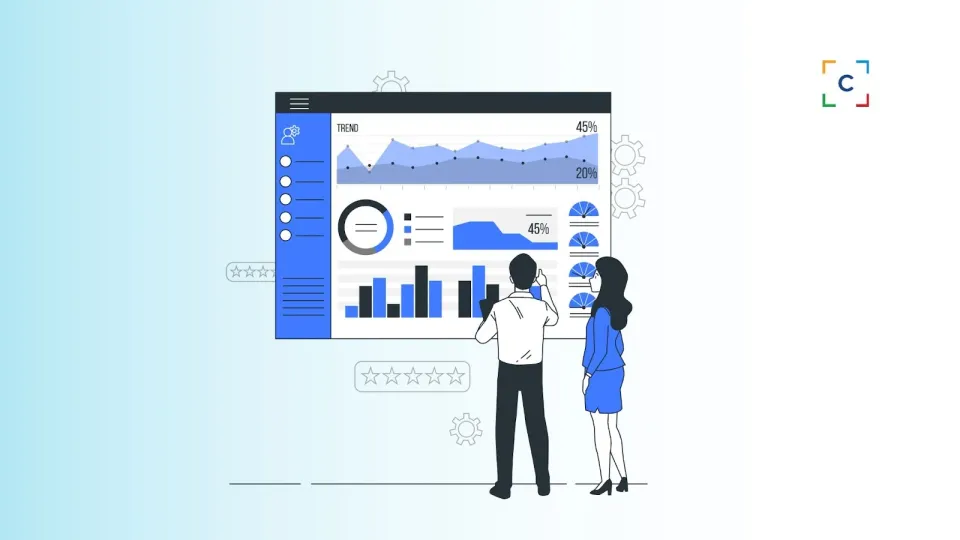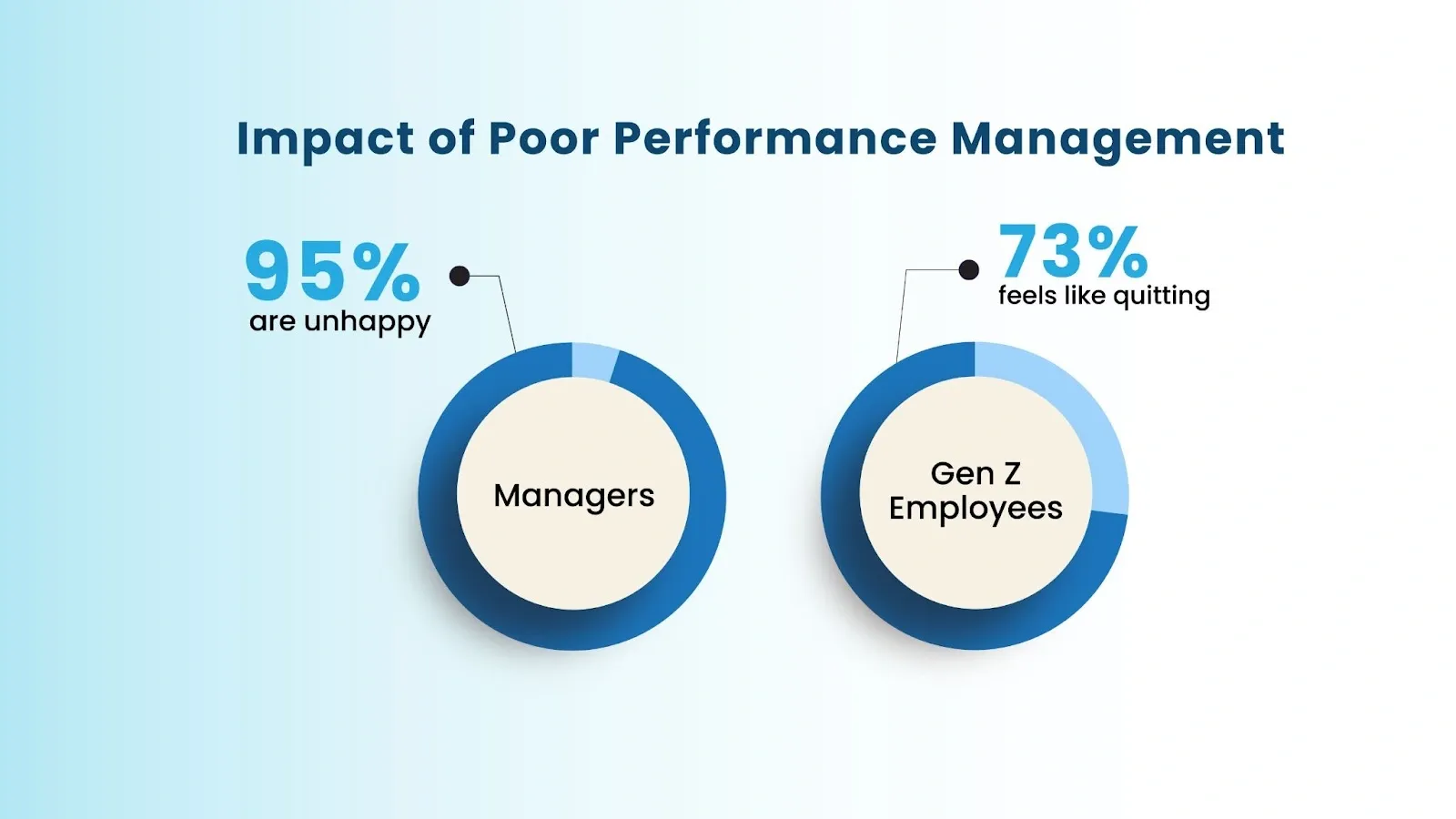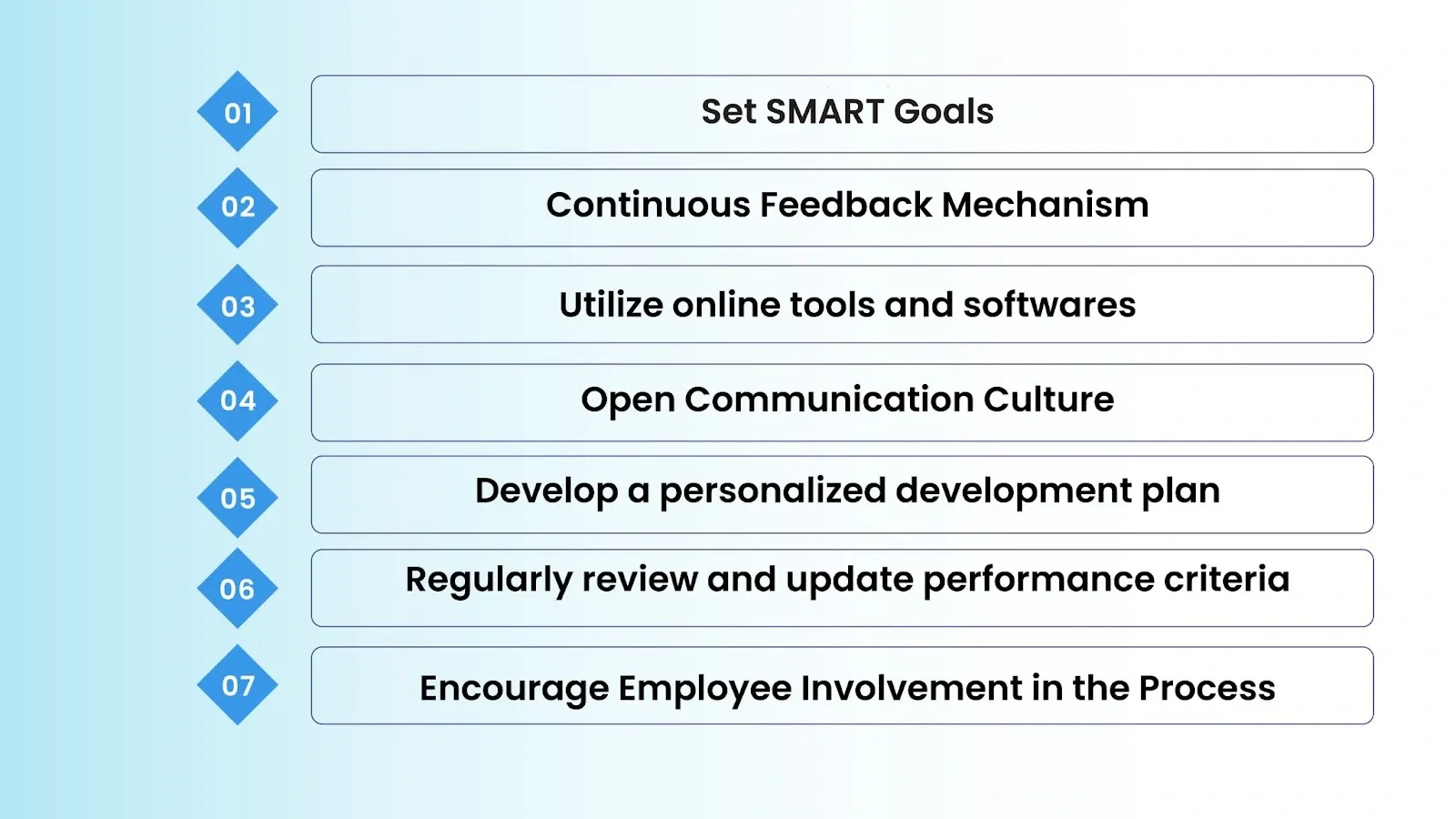How to Improve Performance Management Process: 7 Effective Strategies

Done with ineffective performance management strategies? It’s time to improve!
Strategies you thought would work in 2023 may have worked in 2023, but they may not work in 2024. Why?
The primary purpose of performance management is to achieve the desired outcomes by utilizing the company’s resources: employees! However, over time, the company’s needs and goals are changing to sustain itself in the competitive market. Companies are constantly implementing changes in their different departments, so the performance expectations from employees will also be increased to achieve those goals.
With traditional performance management practices and processes, you cannot achieve the desired outcomes. It not only slows down your performance management system but also hampers the potential for your employees to grow and develop. The performance management process is continuous, and at frequent intervals, it needs to be updated and improved to foster this growth.

Also, facts about performance management say;
- Around 95% of managers are not happy with their company’s current performance review system.
- 73% of Gen Z employees like quitting when they don’t get feedback.
These numbers show why you, as an employer or manager, play a crucial role in improving your performance management process. You are accountable for your employees' performance. So, in this blog, we will explore 7 ways to improve performance management, highlighting your integral role in this process.
What is Performance Management?
Performance management is a strategic approach towards enhancing the productivity and efficiency of the organization by managing employee performance and aligning it with the company’s goals. Performance management is not a one-step process; it includes many other activities like setting targets, monitoring performance, giving feedback, and many more. All these activities are systematically performed to get the desired performance in order to achieve the company’s goal.
However, when it comes to the performance management process, it’s not a system but a methodology that you need to follow to run the management system. So, Let’s understand what the basic steps in the performance management process are:
- Setting goals for employees
- Monitoring their performance,
- Providing feedback to them:
- Creating developmental plans
- Drafting performance review
- Provide rewards and recognition
- Continuous improvement
The list may never end, but these are some basic steps in the performance management process.
Importance of Performance Management
Apart from achieving company goals, performance management is also essential for other following factors:
- Align Individual goals with company goals: Performance management ensures that employees’ short—and long-term goals are aligned with the company’s goals. If the goals aren’t aligned, employers will strategically plan to benefit both employees and the company. This will motivate employees, as their goals are also given importance and value.
- Enhances employee engagement: Performance management also enhances employee engagement. By providing regular feedback and performance reviews, employees will feel engaged and motivated.
- Gateway to open Communication: It's not just about an employee’s communication skills but about fostering a culture of sharing information and understanding employee feedback. With the right performance management approach, employees will feel heard and appreciated and find it easy to communicate with their employers and get guidance.
- Identifies strengths and weaknesses: With better Communication and continuous feedback, employees can understand their strengths and weaknesses. This will help them improve their performance and contribute more effectively to the company’s goals.
- Promotes developmental plans: By creating personalized developmental plans, performance management supports employees in acquiring new skills and advancing their careers. This investment in professional growth leads to a more skilled and adaptable workforce.
7 Ways to Improve Performance Management Process

Set SMART Goals
Performance management is not just about assigning tasks but also guiding employees toward achieving organizational goals. By setting SMART goals, you can provide clear and precise guidance to employees. This clarity helps them prioritize their tasks and how to accomplish them. Also, when employees find themselves contributing to something larger, like organizational success, they feel more valued and motivated, which increases their overall job satisfaction.
Continuous Feedback Mechanism
The traditional method of annual reviews has been proven ineffective compared to constant feedback. In fact, 33% of employees prefer to receive continuous feedback outside of conventional yearly reviews. When your employees receive feedback immediately after performing a task, they can identify areas for improvement and avoid repeating mistakes. This not only saves time and cost but also significantly improves their performance.
Utilize online tools and softwares
Having extra assistance will significantly increase the productivity of your performance management process. You can use performance management software or online tools to track and analyze your employees' performance efficiently. Such softwares not only automates data collection but also provides real-time insights and comprehensive analytics. It offers a clear picture of each employee's progress and areas needing improvement.
With accurate and detailed reports, you can quickly identify trends, monitor goal achievement, and address performance gaps promptly. By leveraging technology, you enhance the precision and effectiveness of performance evaluations, ensuring that feedback is timely and relevant.
Open Communication Culture
Setting SMART goals and providing continuous feedback is essential, but fostering a culture of open Communication is equally crucial. This culture encourages employees to seek assistance when needed, fostering a supportive work environment. With open Communication, employees can approach you for guidance at any time, leading to improved performance and professional growth. It's a critical factor in enhancing employee performance and achieving organizational goals.
Develop a personalized development plan.
In addition to a standard developmental plan for your employees, set a customized plan according to their capabilities and limitations. Understand your employees' strengths and weaknesses and plan strategically to improve them. This customization is necessary because all employees have their capabilities and areas of expertise to improve. So, a common development plan won’t work for everyone.
Regularly review and update performance criteria.
In a dynamic business environment, there will be a new goal to achieve every day, and expectations from employees will also increase. So, focus on key performance metrics and review their performance regularly. Set achievable yet reasonable criteria that fulfill your organizational requirements. Also, keep updating your criteria according to any advancements in the industry. For example, if any new software is introduced in a particular field, set criteria for understanding the software effectively.
Encourage Employee Involvement in the Process
By involving your employees in performance management activities, like goal-setting decisions or strategies to improve performance monitoring, they will sense the level of importance you give to them and how much you care about their opinions. This will boost their zeal for their assigned task and enhance their performance.
Also, this enhances their job satisfaction and loyalty. Additionally, they should be involved in various performance-related activities that help align their objectives with the organization's goals, ensuring that their efforts are directed toward the company's success.
Introduce getCREDIBLE
getCREDIBLE is a unique platform designed to boost professional credibility. Its dynamic features allow users to create and manage digital resumes. The platform highlights your educational background, work experience, and accomplishments as milestones. Displaying your profile and providing feedback in real-time will allow recruiters to trust your profile.
The getCREDIBLE platforms offer a range of features that employers can use to track and improve their performance management processes. With the help of features, employers can be transparent during performance management and plan effective improvement strategies.
Here’s how getCREDIBLE can aid:
- Feedback mechanism: Your method of providing feedback to your employees can impact the whole performance management process. With getCREDIBLE’s feedback feature, you can offer continuous feedback to your employees in real-time. This will save time and improve your employees' performance, leading to higher productivity.
- AI-Assisted Milestone Feature: This feature will allow your employees to represent their accomplishments as milestones, boosting their motivation. You can set some achievable goals, which they can post as milestones once they achieve them. In this way, you can track their progress and set targets accordingly.
- Performance review: With all these features, you can enhance the structure of your performance review, provide more detailed feedback, and help your employees better understand their areas of improvement.
Conclusion
Performance management processes are crucial in Today's professional environment. Regular and timely evaluations help establish a culture of ongoing improvement, enhance Communication, and ensure alignment with role expectations.
The performance management process highlights your employees' strengths and areas for improvement. It ensures that these resonate with your employees' position requirements and contributes to their professional growth.
Platforms like getCREDIBLE can facilitate regular evaluations to showcase your employee’s progress. With this information, you can ensure that your employee development is visible and aligned with your organization's goals.
Register Today to explore getCREDIBLE
Frequently asked questions
- What are the five performance management processes?
- There are five basic performance management processes: goal setting, continuous feedback, performance appraisal, development planning, rewards, and recognition.
- What does the performance management process mean?
- The performance management process involves systematically evaluating and guiding employee performance to align with organizational goals, ensuring continuous improvement, development, and recognition of achievements.
- What is Job performance & Examples?
- Job performance is how an employee fulfills their job responsibilities and duties. For example, it can include sales meetings, providing customer service, or completing campaigns on time.
